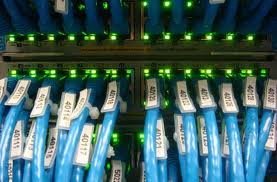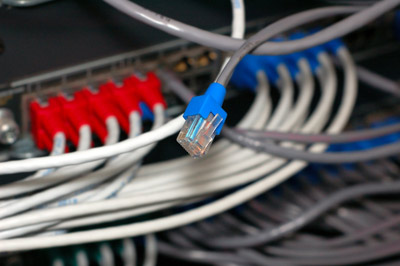
3 Ideas to Promoting a Better Work Life Balance within Your Company
September 21, 2015This Week in Getting Hacked: iHacked Edition
September 23, 2015We’ve written about Bandwidth in the past, so we’re no strangers to it. And there’s so much information about it on the Internet, you may be wondering why this article even exists? Well, a thought occurred to me the other day that while I understand what bandwidth is, I don’t really know what bandwidth is.
Following?
I’m questioning what bandwidth is at its core—the inception, the genesis. Like a four-year-old I must ask: Can I touch it?
What Is Bandwidth?
From what we here at Colocation America understand, bandwidth is typically second largest aspect of the billing and pricing of data center services.
This is somewhat misleading of a name because bandwidth typically refers just to the amount of possible data per second that the connection can handle but what the providers are referring to is the amount of data transferred to and from the server for the given billing cycle.

Most providers will include a base amount of data transfers with the basic package and will be referred to by the number of gigabytes (GB) allowed.
This can be as small as 2GB per month or as high as several hundred.
The providers will also have a fee that will be charged to the customer for data transfers that exceed the amount of allotted bandwidth.
Here’s a fun video that explains a little more of what we’re talking about:
Charges can range as low as pennies per GB to several dollars per GB.
Be sure of what the rate is before signing any agreements.
Actual billing of the bandwidth charges can be calculated one of two ways by the colocation provider.
The most common method is called 95th percentile while the other is the straight data transfer rates.
Right, but while that answers the question of “What is Bandwidth,” it doesn’t really answer the question of what is bandwidth at its core.
But before we dive into that question, let’s take a look how bandwidth is typically charged to get a better understanding of what bandwidth is. In other words we’re going to go back through the tubes.
So we started at a desk, pondering the question of what is bandwidth. We now know how bandwidth is useful to us, but let’s find out how it gets to us and why it needs to be distributed the way it’s distributed.
Why Internet Service Providers Are so Esoteric about Bandwidth
You may love your Internet Service Provider (ISP), but odds are you do not. And you are not alone in that thought.
Have you ever gone to your local ISP and wonder why you’re getting “x” speed slower than what you’re paying for? Then you know the frustration of dealing with ISP and bandwidth.
Now ask yourself this: to get the speed you’re paying for does the ISP have to physically run more cables into your house for you to get a specific speed? What if you want to upgrade your speed? Do they then have to run even more wiring into your house. Or can they just monitor the amount of data that’s entering your home?
If that’s the case, why does Internet speed seem to drop at certain times and be super fast during others? Would more infrastructure help that? Is that even possible or is that even how it works?

It’s difficult to find answers online, mainly because I don’t think the ISPs want the general public to know how it works. But I can tell you all this: who knows?
As far as data centers are concerned, the ISP generally pump enough bandwidth into the buildings for each and every server to get the speed requested. But then to access that server with that specific speed, you need an in-home or in-office connection that can match it.
It’s an never-ending circle of WTF.
How ISPs Generally Charge Bandwidth
95th Percentile – The 95th percentile calculation is a hard formula to try and explain. The easiest way to explain it is to give an example of how the calculation might be computed after a bit of explanation. In order to determine the amount of data transferred to a server, the provider will monitor the network port that a server is attached to. Every 3 to 5 minutes, they will get a reading for the data transfer rate recorded over that time period. These are then stored in a database. At the end of the billing cycle, the database is queried for the entry that is the 95th percentile in overall size. This number is then put into the formula such as this:
(95th Percentile rate) x (billing cycle length) = Bandwidth usage
Now, this in general will benefit most individuals since most network connections are idle for the majority of the time they are idle. However, if a site has a high sustained data transfer rate that is used for more than 5% of the time the link is up, it can be very expensive.
So the question is:
Can I Touch Bandwidth?
Well, sure. But unless you work for an ISP, then you really can’t. There is enough infrastructure in place to get the internet everywhere, but that infrastructure can get overloaded like the freeways during rush hour.
There have been some studies done on the matter of how and why bandwidth gets to some places easier than others, but at this time we just know that bandwidth is a physical object (cables) that pump data from the ISP to your computer. The speed is restricted by the ISP depending on what speed you’re paying for.
Thus, unless you can see electrical currents (data transfer) travelling at the speed of light, then bandwidth is tangible.
If you can’t, then bandwidth is just another untouchable, mind-numbing part of Internet infrastructure that’s hard to wrap the mind around.

